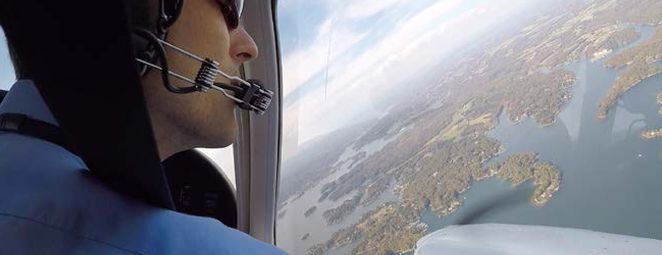Jump to a section:

NextGen is critical to ensuring the National Airspace System (NAS) safely accommodates air traffic growth and new types of aircraft as well as protect aviation's essential role in the lives of Americans and contribution to the U.S. economy.
Improvements from new technologies, capabilities, and procedures through NAS modernization provide benefits in safety, efficiency, capacity, environment, predictability, flexibility, and access and equity. The FAA has measured achieved and estimated projected NextGen benefits that focus on safety, capacity, and efficiency from deployed and future capabilities.
Current Measurements
From 2010 to 2019, implemented NextGen capabilities accrued more than $7 billion worth of benefits from reduced accidents (5 percent), fuel savings (17 percent), other aircraft operating cost savings (21 percent), and passenger travel time savings (57 percent).
Cumulative Benefits of Early NextGen Improvements
Figure 1: Communications, Navigation, and Surveillance are the sources for nearly $4 billion in benefits. Automation accounts for about $1.8 billion, and separation takes credit for an estimated $1.4 billion.
The cumulative benefits of early NextGen improvements are broken up into three categories: Communications, Navigation, and Surveillance; Automation; and Separation. Communications, Navigation, and Surveillance made up about $4 billion in benefits by 2019 and includes benefits such as: reduced flight time through improved routes; more efficient communication through Data Comm tower service; and fuel savings with Metroplex, OPDs, and others. Automation accounts for about $1.8 billion in benefits by 2019 and includes benefits such as: more efficient operations through initial TBFM. Separation accounts for about $1.4 billion in benefits by 2019 and includes benefits such as: increased capacity with Wake Recat.
Benefits are calculated by analyzing performance before and after implementation of NextGen capabilities. Beginning in 2016, many of these benefits were examined in partnership with industry through the Joint Analysis Team (JAT). The NextGen Advisory Committee formed the JAT, which is committed to evaluating together the benefits of implementing specific capabilities in the NextGen Priorities Joint Implementation Plan at select locations. Through various JAT, FAA, and industry analyses, NextGen improvements have resulted in:
- Increased capacity: Wake Recategorization (Wake Recat) increased throughput from 1-20 percent, depending on specific fleet mix at each airport.
- Efficient operations: Time Based Flow Management (TBFM) reduced departure times and the negative effect of separating traffic by miles-in-trail.
- Reduced flight time: Improvements from Performance Based Navigation (PBN), such as Equivalent Lateral Spacing Operations and Q-Routes, saved on average more than 2 minutes per flight.
- Efficient communications: Data Communications (Data Comm) tower service saved on average nearly 1 minute of gate and taxi time per equipped flight.
- Fuel savings: PBN improvements from arrival procedures with optimized profile descents and Metroplex saved nearly 115 million gallons of fuel from 2010 to 2019.
- Reduced accidents: Automatic Dependent Surveillance-Broadcast In in Alaska prevented on average 20 accidents per year.
Future Estimates
The FAA continues to work with industry to form a consensus on the data, methodologies, and value of NextGen enhancements. This work influences how we prioritize future implementations. As programs capitalize on the deployed NextGen infrastructure, the FAA expects benefits to grow.
Current NextGen capabilities are expected to deliver another $15 billion worth of benefits from 2020 to 2030. Overall, NextGen benefits can increase to $100 billion through the 2030s as the FAA makes advanced technologies available at more locations and industry increasingly equips aircraft to use the technologies and share data. This amount represents the combination of realized benefits from implemented capabilities projected through 2030 and modeled benefits for future capabilities that have not yet been deployed.
Maximizing NextGen Benefits
*Projected benefits do not include the impacts of the COVID-19 pandemic
Figure 2: NextGen benefits have the potential to grow from $7 billion in 2019 to $100 billion by the 2030s through FAA implementations and industry equipping aircraft and training crews.
The COVID-19 public health emergency beginning in March 2020, and its effects on aviation and the broader economy, are unprecedented. Much uncertainty remains on how it will affect NextGen milestones, industry commitments, and projected benefits. The FAA has not accounted for the impact in its reporting.
Read more about the benefits of NextGen in the NextGen Report.


